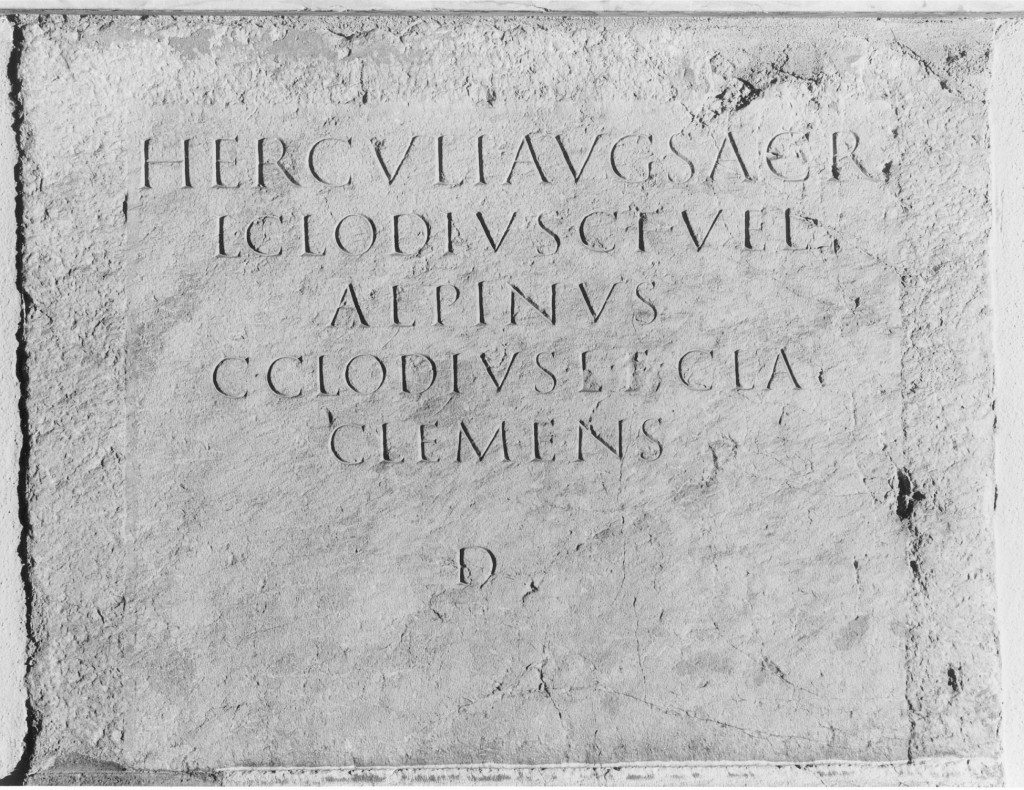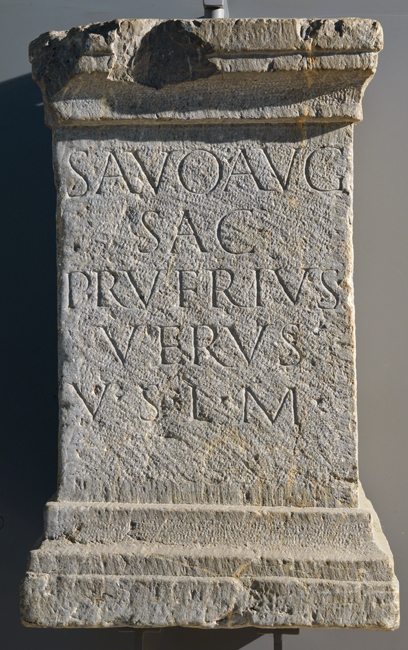Thanks to our partnership agreement with the EAGLE Portal, Ancient History Encyclopedia (AHE) will be republishing select EAGLE stories, on a periodic basis, which illuminate special topics pertaining everyday life and culture in ancient Rome. We hope that you enjoy these ancient vignettes, and we also encourage you to explore EAGLE’s massive epigraphic database.
In antiquity people believed that divinities were omnipresent. Greek and Roman gods and goddesses, as well as local and pre-Roman divinities were invoked on many altars and in various dedications. The fact that dedications to them were inscribed on stone altars, points to their ‘Romanization’, as this was a typically Roman way of worshiping deities. Some pre-Roman sites of cult activity have been discovered in the northern Adriatic and eastern Alpine regions, where various votive objects were ritually deposited, and such places are also known to exist in the Emona (Ljubljana) area, along the river Ljubljanica.
![divinities: Diomedes (left) and Odysseus steal the horses of Rhesos. Lycurgus Painter [Public domain], via Wikimedia Commons.](http://etc.ancient.eu/wp-content/uploads/2016/01/Diomedes.jpg)
Diomedes (left) and Odysseus steal the horses of Rhesos. Lycurgus Painter [Public domain], via Wikimedia Commons.
Places of worship must have been numerous, and sacred landscapes can be partially reconstructed on the basis of early Christian churches, often built as a substitute for pagan sacred sites. Many centuries after its triumph, the Church had to issue edicts against pagans who used to pray to the trees, rivers, and stone idols. The Romans, however, liked to adopt foreign divinities that had been venerated for many generations, their origins lost in the mythic past. An already existent prehistoric shrine, a wooden precinct or a sanctuary was likely often ‘translated’ and adapted by the Romans.
On the way from Aquileia to Emona, at Fons Timavi, where the Timavo/Timava River re-emerges from the earth and flows into the Adriatic, an ancient female divinity (‘the mother of the sea’) may have originally been worshiped. Later, the cults of the river god Timavus and the Greek hero Diomedes, the protector of sailors, were introduced at this spectacular site. Strabo (the Greek historian and geographer of the Augustan Age) reported that the Veneti used to sacrifice a white horse to Diomedes.

A dedication to Hercules.
Diomedes’ sanctuary was situated near two prominent cult places with sacred groves, in which tame and wild animals were living together, deer with wolves, all behaving docilely, and any animal pursued by dogs could find safety by taking refuge in these groves. Strabo stated that these groves were dedicated to Hera from Argos and Aetolian Artemis, the mistress of wild animals and the patroness of hunting. Strabo explained the local goddesses in the Greek tradition; the Romans called them Iuno and Diana, but their Venetic names are not known. Linked to the two sacred groves is the story of a wolf that had been saved from the nets of hunters by a well-to-do man who was prepared to pay for the damage the wolf might do if set free. As an act of gratitude, the wolf (a prototype of the Master of the Wolves) drove off a herd of unbranded horses and brought them to the stable of his benefactor; these horses proved to be a superior breed and winners at races.

An inscription to Diana.
Diana was also worshiped at Emona (by a priest attending to the cult of the emperor), which suggests that the townspeople had close connections to the surrounding forests and wilderness. Many other gods were venerated in the city, particularly Jupiter and the local Aecorna, the patroness of the Ljubljana Marshes. However, one of the earliest cults was that of Hercules. Although his worship had many aspects (he was popular with soldiers, travelers, merchants, stone-cutters), he was also associated with the breeding of cattle, sheep, goats and pigs, transhumance and livestock trade. Aesculapius was honoured by a physician Lucius Peticius Technicus, perhaps a descendant from a central Italian surgeon family.

Altar for the River God Savus.
Diomedes was so popular because he protected sailors, but traffic along the rivers also demanded protection. Along with the water deities, Neptune and the Nymphs, the local river god Savus was worshiped in the Emona region. One of his altars was found in the Sava River near Vernek, not far from Ljubljana. Boatmen encountered difficulty crossing the river rapids and many perished in whirlpools and waterfalls; they needed his help. By some, however, Savus was asked to do an evil act. In a curse-tablet found in Siscia (Sisak in Croatia), he was invoked by a group of people to drown their opponents in order to prevent them testifying against them at court. We shall never know what happened to those people, but many a traveler perished in the river even without the help of magic.
Written by: Marjeta-Sasel-Kos on Europeana Eagle Portal

